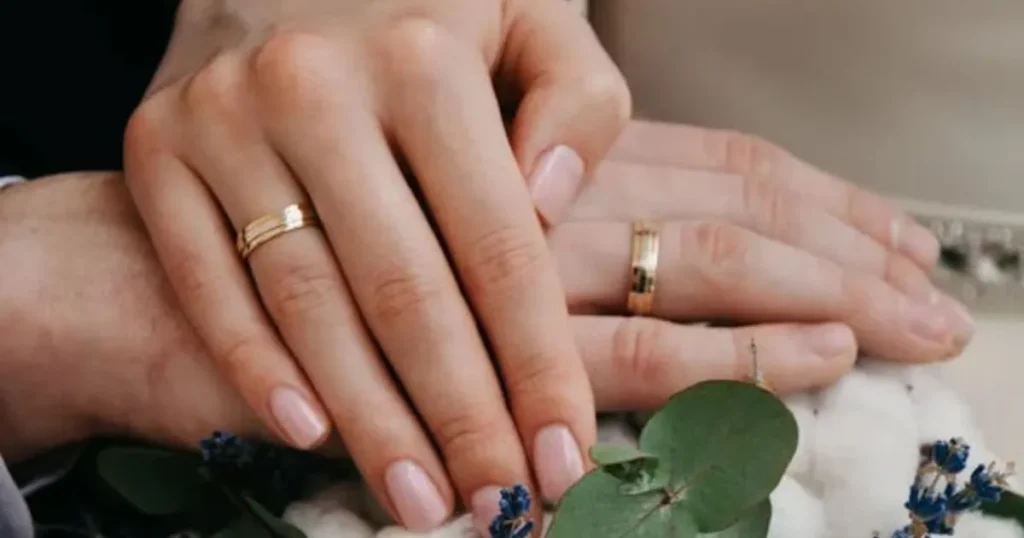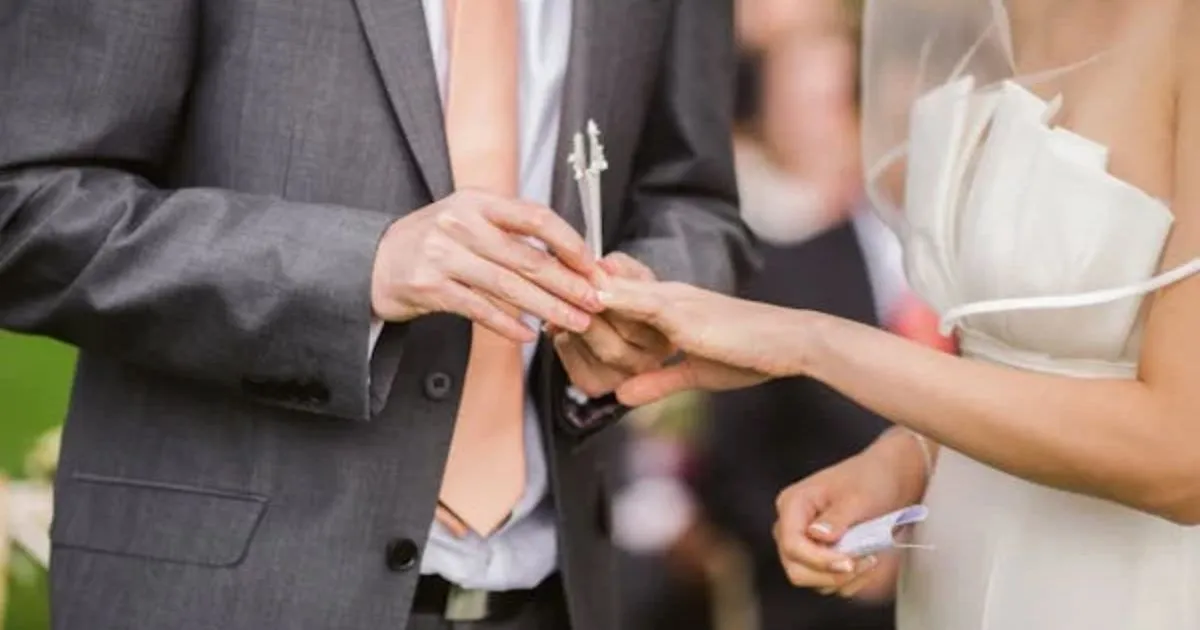A wedding ring is more than just a piece of jewelry. It symbolizes love, commitment, and unity between two people. While today’s wedding rings come in different styles, metals, and designs, their history and cultural significance date back thousands of years.
From ancient Egypt to modern-day traditions, wedding rings have held deep emotional and symbolic meanings in various societies. The simple circular shape represents eternity, infinite love, and an unbreakable bond between partners.
The Origins of Wedding Rings: Where It All Began
1. Ancient Egypt: The First Wedding Rings
Historians trace the earliest known use of wedding rings to ancient Egypt, around 3,000 BCE. Egyptians believed in the eternal nature of love, and they used rings made of braided reeds and hemp to symbolize commitment.
- The circular shape represented eternity, with no beginning or end.
- Rings were placed on the fourth finger of the left hand, as Egyptians believed a vein ran directly from this finger to the heart, known as the “Vena Amoris” or “Vein of Love”.
- As materials evolved, Egyptians started making rings from bone, leather, and later, metal.
2. Ancient Rome: The Symbol of Ownership
The Romans adopted the tradition of wedding rings but with a different perspective. Instead of symbolizing love, wedding rings in Rome often represented ownership and legal contracts.
- Roman men gave iron rings to their brides as a symbol of strength and permanence.
- Over time, gold became the preferred material, as it represented wealth and status.
- Roman women wore their rings to show they belonged to their husbands.
Despite this different perspective, the tradition of wearing a ring on the fourth finger of the left hand continued in Roman culture.
3. The Middle Ages: The Christian Influence on Wedding Rings
During the Middle Ages (5th – 15th century), wedding rings took on a religious and spiritual meaning. The Christian Church fully embraced the use of wedding rings, making them an essential part of marriage ceremonies.
- Rings were engraved with religious symbols, crosses, and intricate designs.
- Gimmel rings (interlocking rings) became popular, allowing engaged couples to each wear one half until marriage.
- Gold became the standard metal for wedding rings, as it was believed to represent purity and divine blessing.
Cultural Perspectives on Wedding Rings
Different cultures around the world interpret wedding rings in unique ways. Some traditions are rooted in ancient customs, while others have evolved with modern influences.
1. Western Culture: A Symbol of Love and Unity
In Western countries, wedding rings symbolize eternal love, fidelity, and partnership.
- Most couples wear rings on the left hand’s fourth finger due to the ancient Egyptian belief in the Vein of Love.
- Engagement rings and wedding bands became distinct traditions, with the engagement ring symbolizing the promise of marriage.
- Diamond rings gained popularity in the 20th century, especially after the De Beers marketing campaign (“A Diamond is Forever”).
2. Asian Traditions: Family and Fortune
In China and India, wedding rings are not always a traditional part of marriage.
- China: Instead of rings, Chinese weddings historically focused on red threads, jade jewelry, and symbolic ornaments to represent love. However, Western influences have led to modern Chinese couples adopting wedding rings.
- India: Many Indian weddings do not require rings, as gold necklaces or bangles are often used to signify marriage. In some regions, men wear toe rings (bichiya) instead of finger rings.
3. Middle Eastern and Islamic Customs
In Islamic culture, wedding rings are not a religious requirement, but they have become a symbol of marriage in many Muslim societies.
- Gold rings for men are traditionally discouraged in Islam, as gold is seen as extravagant for men. Instead, silver rings are more common.
- Some Muslim couples exchange rings during the engagement rather than the wedding ceremony.
4. African Wedding Ring Traditions
In many African cultures, wedding rings are not the primary symbol of marriage. Instead, traditional ceremonies include:
- Beaded jewelry or woven bracelets as a sign of union.
- Cowrie shells and other natural materials as a representation of prosperity and fertility.
- Gold rings in modern African weddings, influenced by Western traditions.
you can olso read : Is It a Sin to Live Together Before Marriage?
The Evolution of Wedding Rings in Modern Times
1. The Rise of Engagement Rings
While wedding rings have existed for centuries, engagement rings became a separate tradition in the 20th century.
- In 1947, De Beers launched the “A Diamond is Forever” campaign, which led to diamonds becoming the standard choice for engagement rings.
- Today, engagement rings come in different gemstones, styles, and designs, reflecting personal tastes.
2. Alternative Wedding Ring Materials
Gold and diamonds are traditional choices, but modern couples explore alternative materials such as:
- Platinum: A durable and hypoallergenic metal.
- Titanium and Tungsten: Scratch-resistant options with a sleek look.
- Silicone Rings: Popular among active couples who prefer lightweight and flexible rings.
3. Wedding Ring Trends in the 21st Century
Modern couples embrace customization, unique styles, and symbolic engravings for their wedding rings. Some popular trends include:
- Stacked rings: Wearing multiple bands to symbolize different milestones in a marriage.
- Personalized engravings: Adding names, dates, or meaningful phrases inside the band.
- Minimalist designs: Simple bands without large gemstones, emphasizing elegance over extravagance.
Should You Wear a Wedding Ring? Personal and Religious Perspectives

While many people wear wedding rings as a symbol of commitment, others choose not to wear them for personal, cultural, or religious reasons.
Reasons People Wear Wedding Rings
- Symbol of commitment and love
- Traditional and religious significance
- A visible sign of marital status
Reasons People Choose Not to Wear Wedding Rings
- Personal preference or discomfort with jewelry
- Cultural traditions that do not include rings
- Religious beliefs that focus on internal commitment rather than external symbols
For some couples, the absence of a wedding ring does not mean a lack of commitment—it is simply a personal choice.
The Enduring Legacy of Wedding Rings
Wedding rings have a rich history that spans centuries and cultures. They have evolved from simple woven bands to intricate gold and diamond designs, yet their symbolism remains unchanged—a token of love, commitment, and unity.
Whether worn out of tradition, religious belief, or personal preference, wedding rings continue to be a powerful representation of the marriage bond. For many couples, choosing the right ring is not just about fashion, but about honoring a timeless tradition of love and commitment.





